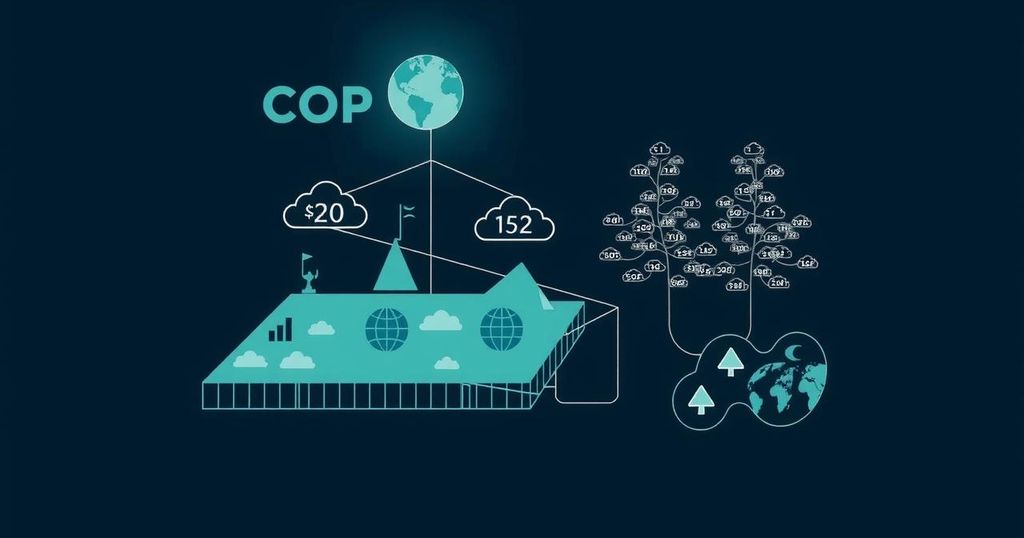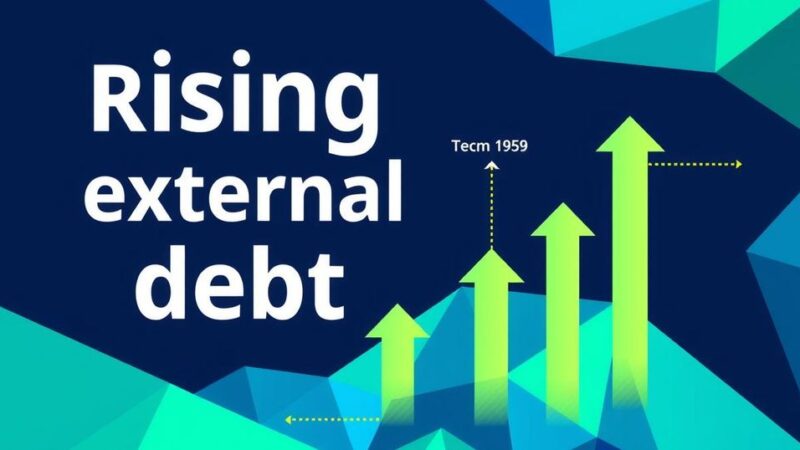The first week of COP29 highlights the urgent need for substantial climate financing, emphasizing the New Collective Quantifiable Goal to fulfill global funding needs. Significant proposals, including solidarity levies and a shift toward investment-based financing, are on the table. However, the absence of top-level representatives from key nations raises concerns about global commitment. Innovations like the Global Energy Storage and Hydrogen Action declarations are promising, yet the financial challenges remain daunting as COP29 enters its second week.
As COP29 in Baku progresses, the urgency for effective climate financing has become undeniably clear. The conference serves as a crucial reminder that achieving climate objectives extends beyond political resolve to encompass significant financial mobilization. Discussions are predominately focused on the New Collective Quantifiable Goal (NCQG), a framework established to fulfill the increasing demand for climate financing, loss and damage compensation, and enhancement of adaptation strategies. The established target of $100 billion in annual climate financing, set forth in the Copenhagen Accord, remains a subject of debate. The OECD reported that this target was met in 2022, summoning $115.9 billion, albeit two years post the original deadline, consequently raising questions regarding the fidelity of these figures—particularly from the perspective of developing nations, which express concerns about fund transparency and categorization. The Independent High-Level Group highlights a seemingly more daunting requirement with an estimated annual need for $1 trillion by 2030, a timeline accelerated from previous projections and excluding China from these calculations. This avails the reality that financial need is no longer speculative; instead, the focus has shifted toward modalities for generating and distributing such funds effectively. In initial proceedings at COP29, several proposals emerged, including solidarity levies—modest taxes imposed on activities detrimental to the environment—which could potentially draw in $200–400 billion each year. Yet, an observable transition from traditional grant-based financing to investment-driven frameworks indicates a prioritization of economic returns, thus complicating the initial intent of altruistic funding. The geopolitical climate complicates the quest for climate finance, as key nations including China, the U.S., and India have refrained from sending high-level delegations, arousing skepticism regarding their commitment to climate goals. Conversely, the United Kingdom has taken strides to lead by reinstating its Nationally Determined Contributions (NDC) with an ambitious target to reduce emissions by 81% by 2035. Despite these hopeful pledges, the overall atmosphere is indicative of slow progress. Reports of dissatisfaction among smaller nations related to COP’s perceived ineffectiveness signal a potential erosion of trust within the process. Calls from influential figures, including Ban Ki-Moon and Christiana Figueres, urge a paradigm shift from mere negotiation to actionable implementation, highlighting an urgent need for a financial strategy that is both robust and credible. Amidst these formidable challenges, notable developments have emerged such as the Global Energy Storage and Grids Pledge, which aims to amplify global energy storage capabilities and foster renewable integration. Furthermore, the Hydrogen Action Declaration emphasizes clean hydrogen production, promising avenues for international collaboration in upcoming conferences. The financial ramifications of failing to act are profound, as estimations indicate that the social cost of carbon could far surpass current carbon quota prices if emissions continue unchecked. The daunting task before COP29 is to create a financially feasible, impactful strategy that addresses greenhouse gas emissions effectively. Overall, as COP29 enters its critical second phase, there lies a pressing imperative for world leaders to converge on decisive financial frameworks, for a faltering in this regard may lead to irreversible damage and skyrocketing costs related to climate change mitigation in the future. The future trajectory of climate action rests squarely on their shoulders; thus, they must recognize the necessity and urgency to act decisively toward sustainable solutions now.
The 29th United Nations Climate Change Conference, known as COP29, serves as a critical platform for addressing the multifaceted challenges associated with climate change. The urgent financial needs articulated during the conference reflect the pressing requirement for effective mobilization of resources to facilitate climate adaptation and mitigation efforts globally. The dialogue centers upon the importance of developing reliable financial mechanisms to support the aspirations laid out in global agreements such as the Paris Accord, while also navigating the geopolitical complexities that impact collaborative climate responses.
In summary, COP29 underscores the critical need for innovative, robust climate financing solutions as nations grapple with escalating climate challenges. The discussions from the first week highlighted both opportunities and troubling trends, specifically the complexities surrounding geopolitical commitments and the imperative for a shift from negotiation toward actionable implementation. The future of climate action hinges on the ability of world leaders to forge credible financial pathways that ensure timely, effective responses to the climate crisis.
Original Source: www.forbes.com






